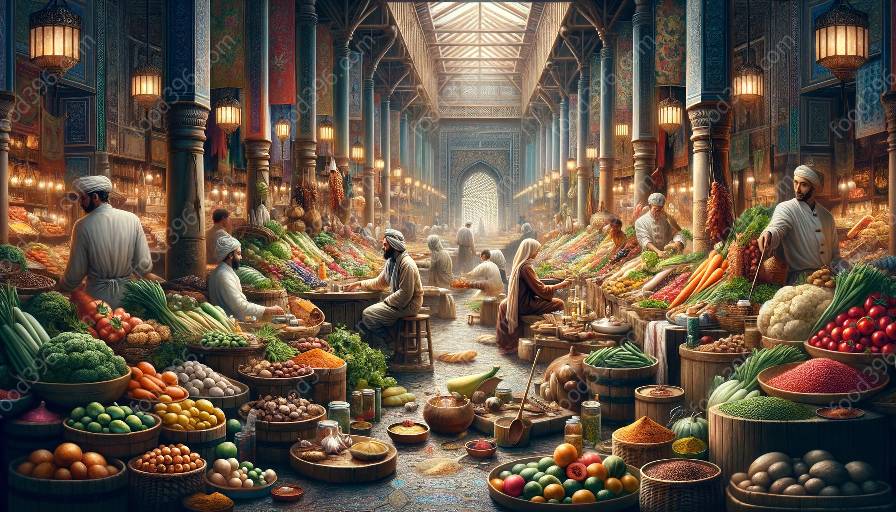In the history of cuisine, the early modern era was a period of innovation and exploration. Food preservation techniques played a crucial role in the development of early modern cuisine, allowing people to store and enjoy a wide variety of foods. Let's delve into the fascinating world of early modern food preservation techniques and their impact on cuisine history.
Introduction to Early Modern Cuisine History
Before delving into early modern food preservation techniques, it's essential to understand the broader context of early modern cuisine history. The early modern period, which spanned roughly from the late 15th century to the late 18th century, was a time of significant social, cultural, and economic change. It was during this era that Europe experienced the Age of Exploration, with explorers traveling to distant lands and bringing back new and exotic foods. This influx of new ingredients and culinary influences had a profound impact on the development of early modern cuisine.
Early modern cuisine was characterized by a rich tapestry of flavors and ingredients, as well as the use of intricate cooking techniques. As the demand for exotic and seasonal ingredients grew, so did the need for effective food preservation methods to ensure a reliable supply of food year-round.
Early Modern Food Preservation Techniques
During the early modern era, a variety of innovative food preservation techniques were developed to meet the demands of a rapidly evolving culinary landscape. These techniques were essential for extending the shelf life of perishable foods and enabling long-distance trade. Let's explore some of the most notable food preservation methods from this period:
Salting and Curing
One of the oldest and most widely used methods of preserving food, salting and curing were integral to early modern food preservation. Meats, fish, and even vegetables were salted or cured to draw out moisture, inhibit the growth of bacteria, and prevent spoilage. This not only preserved the food but also imparted unique flavors and textures, contributing to the diversity of early modern cuisine.
Pickling
Another popular preservation method was pickling, which involved submerging foods in a solution of vinegar, salt, and spices. Pickled foods, such as cucumbers, onions, and fruits, could be stored for extended periods, providing a tangy and tart addition to early modern meals.
Smoking
Smoking was a traditional method of preserving meats and fish that dates back to ancient times. In the early modern era, smoking was widely employed to infuse foods with rich, smoky flavors while also extending their shelf life. This technique contributed to the development of distinctive regional cuisines, as different types of wood were used to impart varying flavors to the smoked foods.
Drying and Dehydration
Drying and dehydration were essential food preservation methods in the early modern period. Fruits, vegetables, and herbs were carefully dried to remove moisture, preventing spoilage and enabling them to be stored for prolonged periods. This ensured a year-round supply of ingredients for cooking and baking, shaping the diverse flavors and culinary traditions of early modern cuisine.
Preserving in Sugar
Preserving fruits and flowers in sugar was a beloved practice in early modern kitchens. This method involved coating fruits and petals in sugar syrup to create sweet preserves and confections. The resulting delicacies, such as candied citrus peels and fruit preserves, added a touch of luxury and sweetness to the early modern table.
Impact of Food Preservation on Early Modern Cuisine History
The development of effective food preservation techniques had a profound impact on the evolution of early modern cuisine. These techniques not only ensured a stable food supply but also contributed to the diversity and richness of early modern culinary traditions. With the ability to store and transport a wide array of preserved foods, cooks and chefs had access to an unprecedented range of ingredients, allowing for the creation of complex and varied dishes.
Furthermore, the exploration and exchange of preservation methods between different cultures and regions fostered culinary innovation and the blending of diverse flavors and techniques. This culinary cross-pollination shaped the development of early modern cuisine, leading to the fusion of ingredients and cooking styles from around the world.
Conclusion
The early modern era witnessed a revolution in food preservation techniques that would leave a lasting imprint on cuisine history. From the use of salt and smoke to the art of pickling and preserving in sugar, these methods not only preserved food but also shaped the flavors, textures, and culinary traditions of the time. By understanding the significance of early modern food preservation techniques, we gain insight into the dynamic and ever-evolving nature of cuisine history, offering a deeper appreciation for the diverse and flavorful dishes that have come down to us from centuries past.

